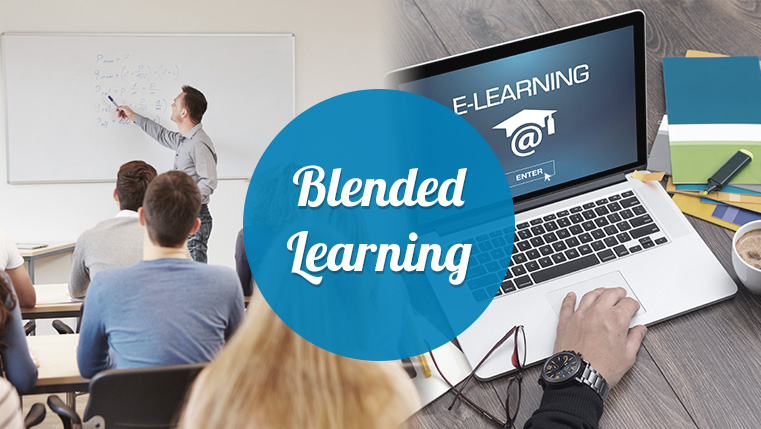Checklist for Designing an Effective Blended Learning Program

A global company needed to educate its employees region-wise on its key products. Currently, they are following an instructor-led training (ILT) program that takes seven days to complete. The company was looking for a training strategy that would cut down the training hours. Adopting blended learning (also known as hybrid learning) helped them bring down the training hours from seven days of ILT to two days of ILT and 18 hours of e-learning.
Are you also interested in exploring the most effective training methods to cut down on your classroom training hours, without compromising the training effectiveness? Organizations decide on blended learning for various reasons such as, to leverage the benefits of both ILT and e-learning, greater learner involvement through collaborative learning, save time and cost, and provide personalized instruction to learners. By including various combinations of digital and classroom learning elements, this hybrid learning method can create a training program that has something for all types of learners.
Here’s a checklist to “blend” classroom training with digital delivery formats:
1. Select the right blend
In blended learning, there are a wide variety of options available to choose from. By determining which learning objectives will be ideal for technology-enabled learning and which can be best achieved by classroom training, you can mix and match the best of all options available in the digital learning market.
If the objective of your course is to make employees execute a frequently performed task which is difficult to perform, it is then ideal to start the training with a classroom session, followed by technology-enabled learning, just-in-time job-aids, and digital resources.
2. Decide on the formats appropriate for different training methods
Instructor-led Training:
In the ILT format, learning content will be delivered via a traditional classroom, followed by readings and assessments. This is a popular choice among companies that wish to provide personalized and hands-on training to their employees. It brings a lot of scope by offering more opportunities for interaction between the instructor and the learner.
Self-directed Learning:
Microlearning modules and e-learning courses are the learning formats appropriate for this method of training. For example, if you want to provide compliance training to new hires, you can choose e-learning as it provides an opportunity to incorporate interesting elements such as games and animations in the otherwise boring compliance training program.
On the other hand, when a software operator wants to know something specific right away regarding a certain feature of that software, he/ she can use a 3-min micro video or an infographic that explains the feature.
Just-in-time Training:
Mobile learning and digital resources in the form of simulations, quizzes, games, and infographics are popular formats used for just-in-time learning. Just-in-time training is like walking up to a senior executive to clarify your doubts when you are stuck on a task. It gives access to the knowledge when you need it, instead of waiting for somebody to answer your queries.
Moreover, just-in-time training in the form of mobile learning is also a practical tool for dealing with the forgetting curve that is commonly associated with classroom training.
Social Learning:
You can use blended learning formats such as discussion boards and online forums for social learning. It is used by organizations to foster collaborative learning among employees, thus offering them a wide base of knowledge from peers, subject matter experts, and industry leaders.
A great way to give the entire learning process a lighter feel, social learning enables learners to get into meaningful interactions and clear their doubts at any point of the day.
Performance Support:
How-to-guides, videos, job-aids, and mobile applications are all appropriate formats for performance support. While just-in-time training provides support at the moment of need, performance support training helps in bridging the gap between the missing and needed knowledge. Mobile apps for just-in-time information or interactive videos for instant information are suitable examples.
3. Create a connection between the components in the blended learning program
To ensure an ideal and enriching blended learning experience, you have to offer the best of both worlds (classroom training and e-learning) in a balanced proportion. In blended learning, one has the freedom to choose the overall learning experience of the learner and the level of interactivity.
Thus, to get the best of an engaging classroom training experience and online learning, blend the digital learning medium with your current classroom training. While choosing the components in a blended learning program, ensure there is a flow in the course content when you shift from one mode to another so that the learners can connect the two and make use of both learning environments.
If your course is initiated with a classroom discussion, then the digital tools and applications used for online collaboration should facilitate continuity.
Editor’s note: This post was originally published in November 2018 and has been updated for comprehensiveness.




![How Blended Learning Can Spruce Up Your Corporate Training [Video]](https://blog.commlabindia.com/hubfs/Imported_Blog_Media/blended-learning-game-changer-corporate-training-video.jpg)

